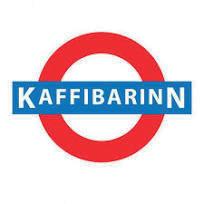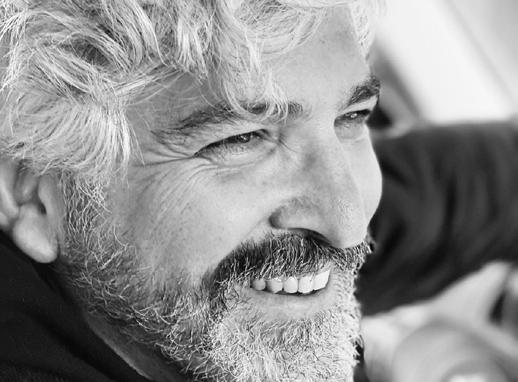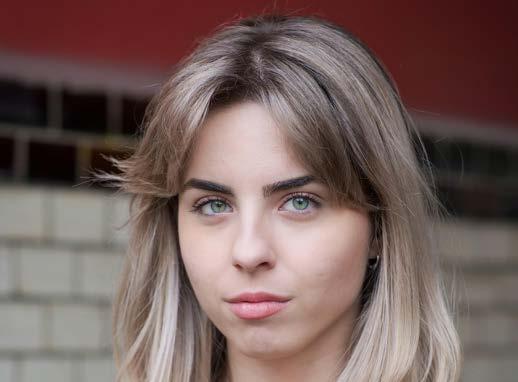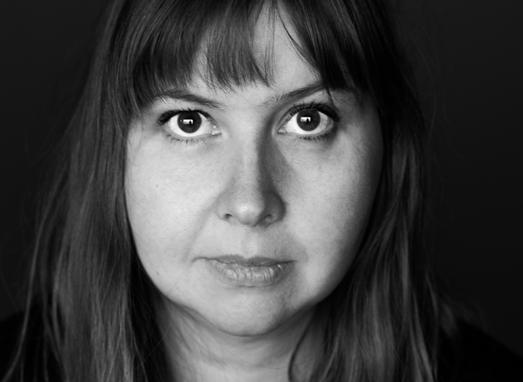/ ABOUT THE WRITERS LAB
Sofia Coppola: “There are always things that I wish were different, or I feel like I’ve made mistakes. But it’s just part of it.”
BEFORE ARRIVING, SUGGESTED Reading/Viewing:
Blake Snyder, Save the Cat!, Michael Wiese Productions
Michael Tierno, Aristotle’s Poetics for Screenwriters, Hyperion
You are encouraged to read a screenplay of your own choice which relates to your project (see: http://www.script-o-rama.com/)
However, we should all read ONE script we all share in common. I am suggesting “Moonlight” by Barry Jenkins which you can download here:
https://www.dropbox.com/scl/fi/ oudiyamnynytaxmj0karw/MOONLIGHT.pdf? rlkey=b1docxmnoaoj0hbaab91wd2uf&dl=0
LAB WORKSHOP PLAN: SCHEDULE & OUTLINE
Essentially, our aim is to recalibrate your projects thinking about their place in the marketplace, the pitch but also ensuring the core story is has a strong thematic driver... We aim for through clarity of story through character centred-writing and, importantly, TRANSFORMATION.
DAY ONE: Foundations of Storytelling
MORNING SESSION:
Date: 5th April
Place & Time: Loft, Bankastræti 7, 101 Reykjavík, 11:00-13:00
/ SCHEDULE
1. WELCOME AND INTRODUCTION: Establish a warm and collaborative atmosphere, and introduce the workshop’s objectives.
2. KEYNOTE ADDRESS: Margrét Örnólfsdóttir provides insights into the importance of continuous development and refinement in scriptwriting.
3. SCRIPT ANALYSIS: Participants share synopses of their existing screenplays, followed by group discussions and feedback on each project’s strengths and areas for improvement.
AFTERNOON SESSION:
Date: 5th April
Place & Time: The Nordic House, Sæmundargata 11, 102 Reykjavík, 16:30-17:30
4. CHARACTER DEEP DIVE: Examine the characters in participants’ scripts, focusing on their motivations, arcs, and relationships with one another.
5. THEME EXPLORATION: Discuss the central themes of each screenplay and brainstorm ways to amplify and deepen their impact.
6. GROUP EXERCISE: Participants break into small groups to identify key structural elements in their scripts and discuss potential revisions.
EVENING SUGGESTIONS:
19:15 THE HUMAN HIBERNATION, Bió Paradís, + Open Talk
21:30 FESTIVAL BEERS, Kaffibarrin, Vouchers to be distributed by Lúcia (Festival Coordinator)
DAY TWO: Developing and Enhancing Your Script
MORNING SESSION:
Date: 6th April
Place & Time: The Nordic House, Sæmundargata 11, 102 Reykjavík, 10:00
1. PLOT REFINEMENT: Provide guidance on strengthening the plot of each screenplay, including pacing, conflict escalation, and narrative twists.
2. DIALOGUE WORKSHOP: Participants workshop scenes from their scripts, focusing on crafting authentic, engaging dialogue that reveals character and advances the story.
3. GENRE AND TONE ASSESSMENT: Analyze the genre and tone of each screenplay, exploring ways to enhance their effectiveness and appeal to target audiences.
AFTERNOON SESSION:
Date: 6th April
Place & Time: The Nordic House, Sæmundargata 11, 102 Reykjavík, 14:00-15:00
4. ONE-ON-ONE FEEDBACK SESSIONS: Participants receive individualized feedback focusing on areas such as character development, plot structure, and thematic resonance.
5. REVISION STRATEGIES: Discuss effective strategies for revising and refining existing scripts, emphasizing the importance of iteration and feedback in the writing process.
6. PITCH PREPARATION: Help participants develop concise and compelling pitches for their scripts, highlighting their unique strengths and marketability.
EVENING SUGGESTIONS:
19:00 KALAK, Bió Paradís, + Open Talk
DAY THREE: Polishing and Pitching Your Script
MORNING SESSION:
Date: 7th April
Place & Time: The Nordic House, Sæmundargata 11, 102 Reykjavík, 10:00
1. SCRIPT POLISHING: Participants work on implementing feedback and making final revisions to their scripts, focusing on tightening dialogue, clarifying character motivations, and strengthening thematic elements.
2. PITCH PRACTICE: Conduct mock pitch sessions, where participants present their scripts to the group and receive constructive feedback on their delivery, content, and overall pitch strategy.
3. INDUSTRY INSIGHTS: Invite industry professionals to share insights on what they look for in a script and pitch, as well as strategies for navigating the industry and building relationships.
AFTERNOON SESSION:
Date: 7th April
Place & Time: The Nordic House, Sæmundargata 11, 102 Reykjavík, 14:00-15:00
4. FINAL REVISIONS: Participants incorporate feedback from pitch practice sessions and make final revisions to their scripts and pitch materials.
5. PITCH SHOWCASE: Each participant presents their refined script in a formal pitch showcase to a panel of industry professionals, Kidda Rokk, Hrönn Kristinsdóttir and Styrmir Sigurdsson followed by Q&A and feedback.
6. CLOSING REMARKS: Wrap up the workshop with reflections on the progress made and encourage participants to continue refining their scripts and pursuing opportunities in the industry. Encourage networking and relationship-building among participants and industry professionals to facilitate future collaborations and opportunities for script development and production.
FINAL GOOD-BYES & PLANS FOR NEXT STEPS.
EVENING SUGGESTIONS:
19:00 EXCURSION, Bió Paradís, + Open Talk
An old African proverb: “Until the lions can tell their stories, tales of hunting will always glorify the hunter.”
PIXAR’S 22 RULES OF STORYTELLING
These rules were originally tweeted by Emma Coats, Pixar’s Story Artist. Number 9 on the list – When you’re stuck, make a list of what wouldn’t happen next – is a great one and can apply to writers in all genres.
1. You admire a character for trying more than for their successes.
2. You gotta keep in mind what’s interesting to you as an audience, not what’s fun to do as a writer. They can be very different.
3. Trying for theme is important, but you won’t see what the story is actually about til you’re at the end of it. Now rewrite.
4. Once upon a time there was ___. Every day, ___. One day ___. Because of that, ___. Because of that, ___ Until finally ___.
5. Simplify. Focus. Combine characters. Hop over detours. You’ll feel like you’re losing valuable stuff but it sets you free.
6. What is your character good at, comfortable with? Throw the polar opposite at them. Challenge them. How do they deal?
7. Come up with your ending before you figure out your middle. Seriously. Endings are hard, get yours working up front.
8. Finish your story, let go even if it’s not perfect. In an ideal world you have both, butmove on. Do better next time.
9. When you’re stuck, make a list of what WOULDN’T happen next. Lots of times the material to get you unstuck will show up.
10. Pull apart the stories you like. What you like in them is a part of you; you’ve got to recognize it before you can use it.
11. Putting it on paper lets you start fixing it. If it stays in your head, a perfect idea, you’ll never share it with anyone.
12. Discount the 1st thing that comes to mind. And the 2nd, 3rd, 4th, 5th – get the obvious out of the way. Surprise yourself.
13. Give your characters opinions. Passive/malleable might seem likable to you as you write, but it’s poison to the audience.
14. Why must you tell THIS story? What’s the belief burning within you that your story feeds off of? That’s the heart of it.
15. If you were your character, in this situation, how would you feel? Honesty lends credibility to unbelievable situations.
16. What are the stakes? Give us reason to root for the character. What happens if they don’t succeed? Stack the odds against.
17. No work is ever wasted. If it’s not working, let go and move on – it’ll come back around to be useful later.
18. You have to know yourself: the difference between doing your best & fussing. Story is testing, not refining.
19. Coincidences to get characters into trouble are great; coincidences to get them out of it are cheating.
20. Exercise: take the building blocks of a movie you dislike. How d’you rearrange them into what you DO like?
21. You gotta identify with your situation/characters, can’t just write ‘cool’. What would make YOU act that way?
22. What’s the essence of your story? Most economical telling of it? If you know that, you can build out from there.
THE WRITTEN PITCH (Thanks to Sasha Damjanovski)
Written pitches come in various forms and will depend on your project (longform TV series or film) and you may not need all of them. They are:
LOGLINE
This is a descriptive summary of your project in one or two (max) sentences; it’s a short and catchy “hook” as per the verbal pitch. The logline needs to be simple and you need to find the juxtaposition, i.e., the conflict. It should always reference your key character. Practice with several loglines and merge them to find the best version.
TAGLINE
A marketing strategy usually found on the poster promoting a film, e.g. In Space No One Can Hear You Scream (Alien); Just When You Thought It Was Safe To Go Back in the Water (Jaws). It’s used to create an emotional response and is normally created by the marketing department but it can be useful for you to create one yourself.
SYNOPSIS
This can be anything from one paragraph up to one page. It’s basically your project’s story in short form and should include:
The key characters
*Hint or sense of the style
*Reveal of the ending
The reveal is important because (1) you need a good ending and (2) it’s an indication to the Reader of whether the story works or not. It’s also important to know your audience, e.g., investors, a cultural organisation, producer etc and adjust your synopsis accordingly.
TREATMENT
Any written pitch of two pages or more is a treatment and it helps you and the Reader to better understand your story. It’s often a contractual obligation in that most producers/production companies will ask you to complete a treatment pre-1st draft of the script.
It should contain all relevant scenes and characters ( for the latter, you should be mindful of and helpful to the Reader by being clear as to whom is who). Use style and language indicative of the project. Start with the title, followed by the logline, then begin the actual treatment. End with your contact details.
PITCH DECK
It’s the norm for producers to ask for one because it gives them a sense of what your project could look like, especially If you have a Director of Photography attached who may also add their vision. However, only send one if requested to do so. A pitch deck will often contain images, graphics etc which means it’s going to be a large (pdf) document, transferable only via Dropbox or WeTransfer, so best to ask first. The pitch deck should contain:
*a title page(with/without images)
*the logline
*theme/concept of the project
*synopsis(half a page)
*execution style, e.g.,mood boards showing locations
*comparables (maximum of 2 films from 3-5 years ago and of a similar budget).
*Be realistic about star names you want/can get for your project. Look at similar budget films and their pool of stars.
At the end, include a paragraph about you the writer, include any accolades such as screenwriting competition placements or film festival awards that the project has picked up.
TV BIBLE
This is often a crossbreed with a pitch deck (a good example is the bible for Stranger Things). The bible will contain a title page; the concept; an overview; the setting; series structure with breakdown; images; characters (more detailed); episode synopses and treatment. End with the franchise potential and your contact details. It’s a good idea to ask the company/producer etc what their preferred style is as this will differ from company to company and person to person.
ONE-PAGER
Literally one page that summarises your project. It will contain a tagline, the title (with an image) and the logline. There will also be a blurb outlining the genre and style of your project, a bit about the story and about you the writer, including your accolades and your vision for this particular project. There should be a synopsis of two paragraphs which include comps and an idea of your target audience (primary and secondary), followed by three paragraphs setting out a call to action (how is this project going to work/be successful), the budget and the schedule, i.e., the date you want to be in production by/the release date. Add your contact details at the end.
COVER LETTER
A simple opening sentence presenting your project and why you’re presenting it. The next paragraph will contain the logline followed by comparables (one simple sentence). Then a blurb about you and your accolades (proof that someone else considers your project worthwhile); your life experiences that connect you to the project. End by saying you would like to share a link to your website (if you have one) and add your contact details. DO NOT beg and DO NOT brag. Act as a professional to be treated as a professional.
WHAT IS PITCHING?
It’s not selling your project or yourself but SHARING your experience and excitement about a project to the point where it becomes contagious. It’s not just the message but the messenger that matters too. It matters who you are and how you are presenting your project.
THE HOOK
“Give them goosebumps to get the cash”. An absolute necessity. A hook is your opening line – it’s what inspired you. Don’t start with the story of your script. Instead, imagine your project as a newspaper article – a headline and a sub-headline. You can also get the hook from the logline.
DEFINE YOUR AUDIENCE
1. Who will watch the film/TV show?
2. Who will listen to the pitch?
Adapt the pitch to whoever you are pitching to.
ESSENTIAL ELEMENTS OF A PITCH
1. What is your project? – define whether it’s film, TV, web series, podcast etc and what the genre is.
2. What is special about it? What’s the USP/hook?
3. What proof do you have that it will work? (Current comps; awards you may have already picked up)
4. What do you have so far? (Script, pitch deck etc)
5. What do you want for your project?
6. What do you get/what’s in it for you?
DO NOT memorise your pitch. Think in terms of Lego building blocks, i.e., we all know how to build a house with Lego, so likewise there should be facts that you know about your project.
LENGTH OF THE PITCH
If you are given a 5-minute slot, you should allow for a pitch of 4 minutes; if you’re given a 4-minute slot, allow for a pitch of 3 minutes – in both cases, allow for breathing space.
THREE ACT STRUCTURE
Just like your script, your pitch has a 3-act structure.
1st Act – 25%
The hook. Something about yourself. The story.
2nd Act – 50%
Scenes, characters etc.
3rd Act – 25% Wrap up.
THE PERSON BEING PITCHED TO
Do they think the project is worth it? Is it for them? What else do you have for them? Do they want to work with you and vice versa. There must be an emotional connection to the professional relationship:
1. Authenticity – be who you are.
2. Respect – must be mutual.
3. Presence in the moment.
4. Control of yourself and the situation.
5. Humanity – opposite of arrogance.
PRESENTING YOURSELF
Always present your best self. Be captivating. Be passionate about your project as passion captivates. Just as your VOICE comes across in your writing, likewise it should feature in your presentation:
Rhythm - Dynamic pauses; short sentences; alternate voice pitch level for emphasis Edit yourself
Use twists and turns to keep things moving Maintain eye contact ALWAYS. Use humour (if appropriate – not always necessary) Body language matters
FOOTNOTES
BE Odd (i.e., yourself)
BE Curious (show an interest and ask questions) AND Dance! (think about how dancing brings people together)
GUIDELINES FOR WORKSHOP PARTICIPATION
In our workshops, let’s foster a supportive environment where constructive feedback is paramount. Here’s how we ensure productive discussions:
COMMENCE WITH POSITIVITY
*Begin by highlighting the strengths of the screenplay. Each member should express at least one aspect they admired about it.
TRANSITION TO BALANCED CRITIQUE
*As the session progresses, shift from positive comments to a more comprehensive discussion covering both strengths and areas for improvement.
*Offer constructive criticism aimed at enhancing the story’s quality. Ask: How can the author refine their script during revision?
FOCUS ON TECHNIQUE, NOT TASTE
*Emphasize matters of technique over personal preferences. Avoid statements like “I don’t like this genre.” Instead, pinpoint specific areas where execution could be improved.
*For example, suggest ways to enhance the effectiveness of a horror script through better storytelling techniques.
RESPECT THE WRITER’S VISION
*Refrain from imposing personal writing styles on others’ work. Approach critiques from the perspective of a reader and fellow writer.
*Remember, the script belongs to its creator; our role is to provide feedback, not rewrite the story.
ENCOURAGE DIVERSE PERSPECTIVES
*Don’t hesitate to voice dissenting opinions. Your unique insights contribute to a dynamic discussion.
*Challenge conventional viewpoints and offer alternative perspectives to enrich the dialogue.
ENGAGE IN ACTIVE DISCUSSION
*Feel free to pose questions to the group to ensure all aspects of the script are addressed.
*Prompt discussions on overlooked elements, such as the authenticity of dialogue.
AVOID DEFENSIVE RESPONSES
*Refrain from using question time to defend your script against critiques. Explaining intentions can limit the effectiveness of feedback.
*Embrace critiques as opportunities for growth rather than personal attacks. Let’s uphold these principles to cultivate a collaborative and enriching workshop experience.
Gharavi is a BAFTA and Sundance-nominated writer/ director, focused on delivering authentic stories lensed with an impeccably wrought perspective.
Having worked in war zones and in guerrilla filmmaking, Gharavi marries her indomitable spirit with a distinct talent to deliver performances and beautifully observed stories. Her debut feature, I Am Nasrine, was nominated for a BAFTA and she is set to direct her third feature, a Virginia Woolf adaptation in 2024.
Now a showrunner, Gharavi’s also engaged in development on her first TV series, Refurinn/The Fox, an Icelandic detective noir with an intriguing twist, exec produced by Nomadic Pictures (Fargo). She recently completed directing her first Netflix series, 4 episodes shot in Morocco: a hybrid drama-doc series, African Queens: The Cleopatra, for Westbrook, exec produced by Jada Pickett-Smith.
Gharavi is also an academic, teaching filmmaking around the world, and was awarded an MIT Fellowship. She was elected into the BAFTA Academy in 2017, is represented by Independent Talent in the UK and Gersh in Los Angeles, her two home bases.
BUTTER QUEENS
by DANIELLE EVENSON
WRITER’S BIO
&
HEATHER HUNTINGTON
Danielle & Heather have earned their rural America stripes. They’ve had frostbite and sunburn in the same 24 hours, they love a good bingo game, and they’ve happily eaten lutefisk on a cold February evening. They want to make Butter Queens as a half-hour animated comedy series to underline the absurdism behind today’s feminism trends, the patriarchy, and what happens when the curse “may you get what you wish for” actually comes true. It is told all through their specific fast, dark, pop-culture lens that they’ve honed through their education at USC and Emerson, as well as in fellowships at The Orchard Project, Stowe Story Labs, and Gotham Film & Media Institute. They are hoping the vital storytelling that is at the heart of Iceland’s Stockfish Film Festival will help their script and pitch solidify like the sweet, sweet butterfat they love.
LOGLINE
A midwife in the 19th century in Iceland, who claims to be touched by God, becomes pregnant despite living a chaste life.
A REALLY BIG DEAL
by MARK L. FEINSOD
WRITER’S
BIO
MARK L. FEINSOD got his start as a reporter for IndieWire and was later promoted to News Editor. Since then, he has become an award-winning writer, director and producer whose work has been described by Time Out New York as “urbane.” The New York Times wrote that A SENSE OF ENTITLEMENT “at times evokes Orson Welles,” while The Village Voice called it “a superb 30-minute stimulation of the senses.” Mark’s micro-budget feature THE DEAFENING SILENCE OF A VERY BRIGHT LIGHT was described by The New York Post as “haunting.” His original TV projects have been optioned by NorthSouth Productions and others. He has directed music videos for Riviera, Rebecca Pronsky and Monocle. Mark’s feature script STUDY ABROAD won first place in the Beverly Hills Screenplay Contest. It is in development with Kristin Ellingson directing and Eleanor Hoppe and Milk & Honey Pictures producing. The project’s agent is Claire Best of Claire Best & Associates. He was a participant in the Talent Lab of the Reykjavík International Film Festival in 2022. Mark will be shooting a short called EVERYTHING IS PERFECT AND I HAVE NOTHING TO COMPLAIN ABOUT later this year. It is being fiscally sponsored by the Gotham Film & Media Institute. He is also working on a comedic documentary short called SLEEPING WITH THE DRAGON. Mark is in development on his second feature A REALLY BIG DEAL.
LOGLINE
A struggling New York actress’s world is thrown into chaos when her directionless ex-boyfriend returns to declare his love. But when a wealthy admirer offers to finance a film for her in exchange for marriage, she must decide what she values most.
LAST WHALING STATION
by MICAH GAREN & ANAHITA BABAEI
WRITER’S BIO
Micah Garen is an award winning documentary filmmaker and founder of Four Corners Media (www. fourcornersmedia.net) and ScreeningRoom (www.screeningroom.org). He has been nominated for three Emmy awards and won the Gold Nymph for Best Documentary at the Monte Carlo Festival du Television. He has over twenty three years experience having directed and produced two dozen short and feature films for outlets from The New York Times to Al Jazeera.
Anahita Sahar Babaei, born and raised in Iran, is an award winning artist, writer, filmmaker and activist. She has two masters degrees in science and art, and an academic background in philosophy. She has more than a decade experience in art, film and fashion. Anahita has dedicated her voice and attention to feminism and the biodiversity crisis. Her art in her words: “I find the human body a fascinating canvas for visualising ideas- Mostly existential challenges and psychological paradoxes. Recently my focus is on the the self-destructive behaviour of human, on the edge of the 6th mass extinction. I write and make art as I believe before every change firsts comes the imagination. I believe those who venture with the games of story telling, now more than ever need to step forward to tell the story of a more harmonious life. My Body is a mirror of a collective body of life on earth reflecting pain, love, Ideas and what is left behind”.
Micah Garen & Anahita Babaei are finishing the feature film Last Whaling Station, which was a work-in-progress at last year’s Stockfish Film Festival.
LOGLINE
The Last Whaling Station is a feature length documentary film that follows the efforts of Anahita Babaei and Micah Garen as they campaign with Icelandic partners to end commercial whaling in Iceland.
LIFE AND DEATH
by SVANA JÓHANNSDÓTTIR
WRITER’S BIO
Svana has written over ten theatre musicmonologue. She in currently involved with the film Women, Dreams and Bread that is planned to be premiered in Iceland on 20th april 2024.
LOGLINE
Colorful documentary based on a Icelandic singers cultural incentive to get Icelanders to speak more of death by learning from the Mexican tradition of Day of the dead.
SISTERLAND
by DÖGG MÓSESDÓTTIR
WRITER’S BIO
WAITING CALL
by BIANCA RADOSLAV
WRITER’S BIO
Bianca is an international actress, writer and producer. Originally from Romania, she studied Acting at Cours Florent in Berlin. Ever since she was a kid, she was fascinated with myths, poetry and fairytales. Bianca has experience with creative, as well as academic writing, having participated in a variety of courses throughout the years. With an LL.M. in International Dispute Resolution from Humboldt University, Bianca has an interest in intercultural communication, mediation techniques, as well as interdisciplinary studies. In her work, Bianca likes to explore migration stories in a European context, as well as the connection people have with their roots.
LOGLINE
When she receives an unexpected phone call in the middle of the night, a woman faces a tough choice as she reminisces long-forgotten memories.
As a writer I’m the creator and co-writer of the 10 episode drama series Cornucopia (Hugborg) with Ottó Geir Borg, produced by Saga Film. Cornucopia was selected for the MIA pitching forum in Rome for high end tvseries and has been commissioned both by Viaplay and MBC in the Middle east. Dögg is also the co-writer of the tv series C’est la Vie and the film Gelgjur that have both won 2 out of 3 script grants from the Icelandic Film fund. Gelgjur was selected for the Midpoint workshop at Stockfish Film Festival and both C’est la vie and Gelgjur (Happy Crappy ‘95) were selected for the directors guild writers workshop (Vinnusmiðja SKL). Dögg Mósesdóttir is also the co-writer of the feature film “Sisterland” aiming for production in 2025.
LOGLINE
A young mixed race Inuit woman, raised in Iceland, travels to Greenland for the first time when her paternal grandmother gets sick. A chain of events leads her to the path of her disappeared father, a man or a myth, a journey that takes her far beyond the limits of human society and common sense.
URÐUR
by BJARGEY ÓLAFSDÓTTIR
WRITER’S BIO
Bjargey Ólafsdóttir lives and works in Reykjavík. She studied painting and mixed media at Iceland Academy of the Arts, Reykjavík and she holds a MFA from The Academy of Fine Arts Helsinki. She studied photography at Aalto University in Helsinki and Screenwriting and Directing at Binger Filmlab, Amsterdam. The art of Bjargey Ólafsdóttir is not confined to a single medium as each of her concepts calls for a different tool: photography, film, writing, sound art, performance and drawing. Her works are narrative by nature, telling stories of bored female dentists, rock stars in Japan and women that can see into the future and beyond. Her works are sometimes scary, yet beautiful and always brimming with humour and playfulness.
LOGLINE
A young woman has an accident and is nursed by Urður in her cave, Urður tells her fantastic stories that help her to heal.
SAFEGUARD by CARLEY ARMSTRONG
WRITER’S BIO
Born and raised in the North East of England, Carley attained a First-Class Degree in Media Production: Television, Radio and Film and a Creative Writing MA, along with many Drama related credentials. She is a BAFTA connect Producer, an RTS Nominated Rising Star Producer, is one of 8 candidates that took part in the BFI Creative Producer Lab 22/23, a HETV chosen 50, awarded The University of Sunderland Alumni Achiever of the Year Award and an NFTS feature film Alumni. Carley has worked in Theatre, Film and Television from childhood, performing, writing and directing many theatre productions, then pursuing her aspirations in writing drama by working her way from runner to freelance script supervisor, script editor and now into writing & producing. Carley has worked on over 100 episodes of serial Drama across her career from High End TV Drama’s for Apple TV, Amazon Prime, Netflix, World Productions, Calamity Films and Quaystreet Productions to name a few; to feature films such as Mission Impossible Dead Reckoning Part 1 & 2, Kraven the Hunter, Black Adam and Enzo Ferrari; whilst continuing to build on her aspirations in producing and writing alongside. Her love for writing and developing scripts has been something she has worked her whole life to achieving and she has recently created and developed an original 6-part psychological TV drama with her agent Madeleine Cotter at WGM Atlantic Talent and Literary agent.
LOGLINE
37-year-old Claudia Ellery’s life begins to spiral out of control, as she finds herself being embroiled in a sinister and dark underworld of child trafficking and forced adoption.
































